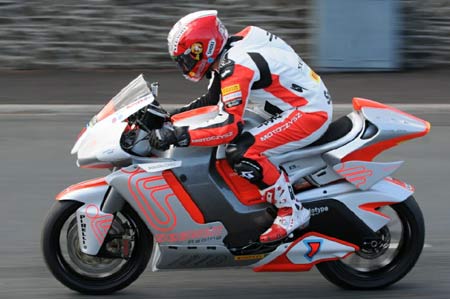Losses in electric motors
In designing or developing a race engine, we traditionally spend a lot of time, effort and money on mitigating frictional losses. We try to minimise heat rejection to oil and water. Efficiency equals performance, so we try to make the engine as efficient as we can; we want as much of the energy contained in the fuel as possible to be converted to kinetic energy.
Much is made of the advantages that electric hybrid systems will bring to production vehicles and to racing. Pure electric racing is already here: recently an electric motorcycle lapped the 37.7-mile Isle of Man TT course at over 104 mph during the TT Zero race for electric motorcycles. TTX-GP is another electric motorcycle class, with championships on three continents.
Despite having none of the highly loaded sliding contacts that characterise an internal combustion engine, or the mass of meshing gears that we find in an automotive transmission, electric motors also have losses, which have to be minimised, and which might need to be cooled. In racing applications of electric motors, we will want the most powerful motor to fit in the smallest space, and liquid cooling is quite likely to be required. In a previous article we noted that some liquid cooling strategies are more successful than others. Surely with the only mechanical relative movement being in the bearings, there should be only very small amounts of heat and losses to deal with? Unfortunately not.
There are two main kinds of losses in electric motors, which are often referred to as iron losses and copper losses. Dealing first with iron losses, these are made up of two 'components', namely eddy current losses and hysteresis losses. Hysteresis losses occur as we switch the electromagnets in our motor on and off, and depend on the magnetic properties of the iron material used in the motor.

Special materials have been developed to limit these losses. 'Electrical' steels with a high silicon content have low hysteresis, but are disadvantaged by having what's called a low saturation flux density. This essentially means that we need a big, heavy stator to achieve the same magnetic field as a material with a higher saturation flux density. So, for a racing electric motor, more specialised materials may be called for.
Eddy current losses depend on many variables, including the thickness of the laminations in the stator, the frequency at which the motor operates, the flux density and the material's resistivity. The only mechanical changes we can make here are to use a laminated stator and decrease the thickness of the laminations, each of which need to be electrically insulated from each other. The improvement that comes from using ever-thinner laminations follows the law of diminishing returns. The iron losses are proportional to the square of the lamination thickness.
Copper losses are generally the greater proportion of losses in an electric motor, and these are the 'I-squared R' losses we were taught about in school. Copper losses are due to the resistance of the copper conductors and the current that we ask them to carry, and they lead to heating of the conductors. Of course, because copper is heavy, we want to use as little of it as possible, minimising cross-sectional area. This increases resistance and therefore increases losses and heating. Unless we can remove sufficient heat from the conductors or limit the current to low levels to allow air cooling to suffice, they will melt, just as a piece of fuse wire melts when we exceed its current capacity.
Fig. 1 - Michael Rutter on the MotoCzysz, which holds the lap record for electric bikes around the Isle of Man TT circuit
Written by Wayne Ward